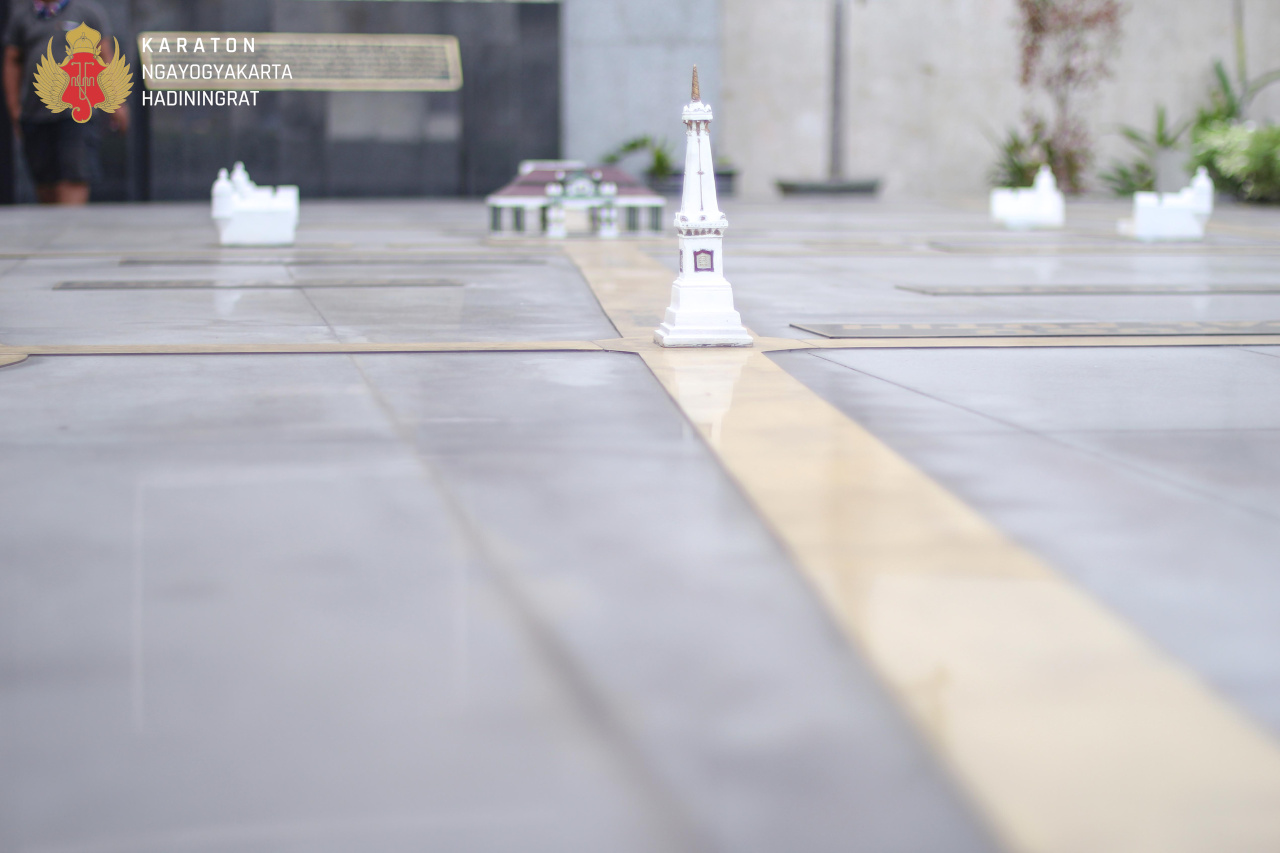This monument is a marker for the northern boundary of Yogyakarta City. Initially, this monument was named Tugu Golong Gilig and is now known as Tugu Pal Putih (pal also means monument) because the color of the paint used is white.
History of the Tugu Yogyakarta
The main principle used as the basis for the construction of the palace by Sri Sultan Hamengku Buwono I is the Hamemayu Hayuning Bawono concept. This means making bawono (nature) hayu (beautiful) and rahayu (safe and sustainable). These concepts were embodied by Sri Sultan Hamengku Buwono I with the South Sea and Mount Merapi as the axis.

The Tugu Golong Gilig was originally 25 meters high. The top of the monument is shaped like a ball, so it is called “golong”, while the body of the monument is shaped like a truncated cone that is round and long (gilig). Because the monument is white, in Dutch it is called De Witte Paal. Therefore, this monument is also often referred to as the White Pal Monument.
Philosophically, the Tugu Golong Gilig Monument symbolizes the unity of creation, feeling, and will to face the Creator (the unification of all wills to face the Creator). The color white was chosen to symbolize purity of heart which should be the basis for this effort.
Tugu Golong Gilig is flanked by two villages, namely Pingit (storing) in the West and Gondolayu (corpse odor) in the East. This naming has the meaning that when humans are about to start a journey towards the Creator, the first thing to do is to leave behind things that smell bad.
From Tugu Golong Gilig to the south, there is a road named Jalan Margatama which means the road to virtue. Next is Jalan Maliabara (Jalan Malioboro) which means the use of a “torch” of light, namely the teachings of the saints. To the south again is Jalan Margamulya which means the road to glory. To get there, humans must be able to expel (ngurak) bad desires. Therefore the next road is named Jalan Pangurakan.
When the Dutch government renovated the entire Tugu building, a new building was made using the lower part of the Golong Gilig Monument. The new monument, which was inaugurated on October 3, 1889, has four marble inscriptions embedded on its four sides. Each inscription is written in Javanese script and reads as follows: on the west side: “Yasan Dalem Hingkang Sinuhun Kangjeng Sultan Hamengku Buwana Hingkang Kaping VII”, on the right side: “Yasan Dalem Hingkang Sinuhun Kangjeng Sultan Hamengku Buwana Hingkang Kaping VII”, on the east side: “Yasan Dalem Hingkang Sinuhun Kangjeng Sultan Hamengku Buwana Hingkang Kaping VII”, on the west side: “Yasan Dalem Hingkang Sinuhun Kangjeng Sultan Hamengku Buwana Hingkang Kaping VII”, on the east … west side: “Yasan Dalem Hingkang Sinuhun Kangjeng Sultan Hamengku Buwawan Hingkang Kaping VII”, on the south side: “Wiwara Harja Manggala Praja Kaping 7 Sapar Alip 1819”, on the east side: “Hingkang Mangayubagya Karsa Dalem Kangjeng Tuwan Resident Y. Mullemester”, and north side: “Pakaryanipun Sinambadan Patih Dalem Kangjeng Raden Adipati Danureja Hingkang Kaping V Kaundhagen Dening Tuwan YPF Van Brussel Opsihter Waterstaat”.
In addition, there are Javanese writings on all four sides. The colors used on the monument are a combination of dark chocolate and gold found at the top of the Yogyakarta Monument. The geometric shape of the monument consists of blocks, prisms, and bud-like twists.
That is the description of the history of the Tugu Jogja Monument and the philosophical meaning behind it. Hopefully useful. Come and witness the beauty and cultural richness of Yogyakarta. Discover the charm of Jogjakarta with Yogyakarta Tour to visit various interesting destinations such as Borobudur & Prambanan Temple, Sultan Palace – Tamansari Watercastle, and also Merapi Mount Sunrise.
Our tour packages offer comfort and convenience for those of you who want to explore Jogjakarta. From transportation, accommodation, to entrance tickets to tourist attractions, we have arranged everything. We provide a variety of economical and complete tour packages to Jogjakarta.
To make the most of your Yogyakarta adventure, trust Yogyakarta Tour. Our local expertise ensures a smooth journey, from the famous places to the hidden gems. Let us be your guide as you explore the enchanting landscapes, savor the rich flavors, and create memories that will last long after you say goodbye to Jogja. Explore Yogyakarta with Yogyakarta Tour – where every moment is a step into the heart of Indonesia’s soul.
Baca Juga:
- The Kraton Yogyakarta, The Greatest Heritage of Javanese Royal Culture
- Abang Temple, A Ruined Temple with Full of History
- Beringharjo Market Yogyakarta: What to Buy in The One of The Oldest Market in Yogyakarta
- The History of Mendut Temple Yogyakarta
- Kaliurang Park Yogyakarta, a Kid-Friendly Destination to Spent With






